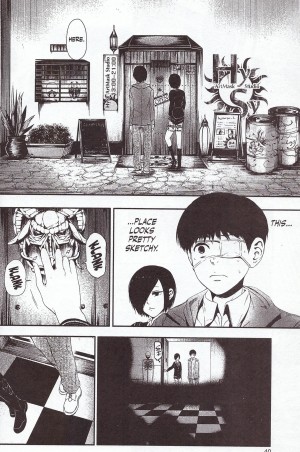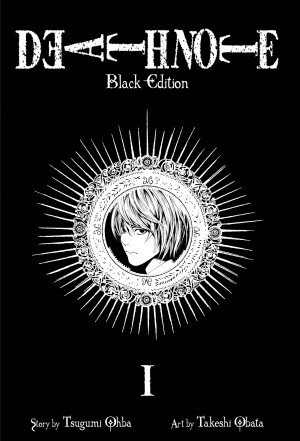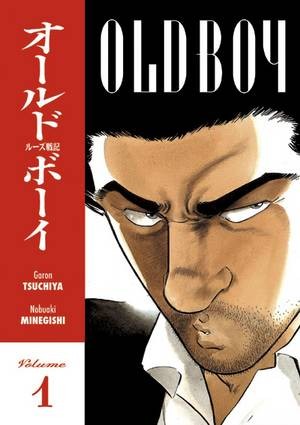Review by Ian Keogh
Sui Ishida set up an interesting problem for the teenage Ken Kaneki in Tokyo Ghoul 1. Due to circumstances explained, he’s largely human, but now has the instincts of a ghoul. In practical terms it’s affected his diet. Only human flesh will do, as all other food prompts vomiting, and Kaneki’s not keen on his new requirements, although has learned that coffee disguises the taste. The transformation has also left him with one distinctive staring red eye, for which Ishida has designed a home-made method of concealment providing a distinctive visual touch.
The story to date has established Kaneki’s friendship with Hide, and Kaneki opens this volume employed by a cafe run by a kindly ghoul who also serves humans. His daughter Touka, posed more provocatively on the cover than she behaves inside, is more aggressive when it comes to protecting the secrets of ghouls. That first book passed at a rapid clip, and this is more of a stocktaking exercise as relationships develop and secrets are learned. Ishida also begins extrapolating a little more on the topic of ghouls in wider society, which appeared to be accepted in a matter of fact manner in the previous book. We’re introduced to a pair of investigators whose tolerance for ghouls is exceedingly low. The problem with broadening the cast from the insularity of the opening volume is that it immediately opens up a whole lot more questions, not least about Kaneki’s home and parents, who’ve not been seen to date.
Balancing this is Ishida’s accomplished manner of introducing core concepts about what Kaneki now is. He’s played well as the innocent in a new world, and as he learns his capabilities and limits, so do we. Considering ghouls have to eat human flesh Ishida is relatively subtle about matters. There are ghouls who’re happy with their lot in life, and those who’d prefer to have a normal diet and mix in with humanity. These distinctions are irrelevant to the investigators tasked with hunting down and dealing with all ghouls, and the ghoul community needs strategies for coping with loss.
As previously, Ishida’s art is clearly defined until it comes to attack scenes. There are only a few in the book, but again they’re confusing to follow. Perhaps that’s the intention, as in real life fights don’t have the cohesion of choreographed cinema or TV.
Expanding Kaneki’s world and that of the ghouls makes this a better book than the introduction and delivers the potential that largely lacked. Kaneki’s woes continue in Tokyo Ghoul 3.





